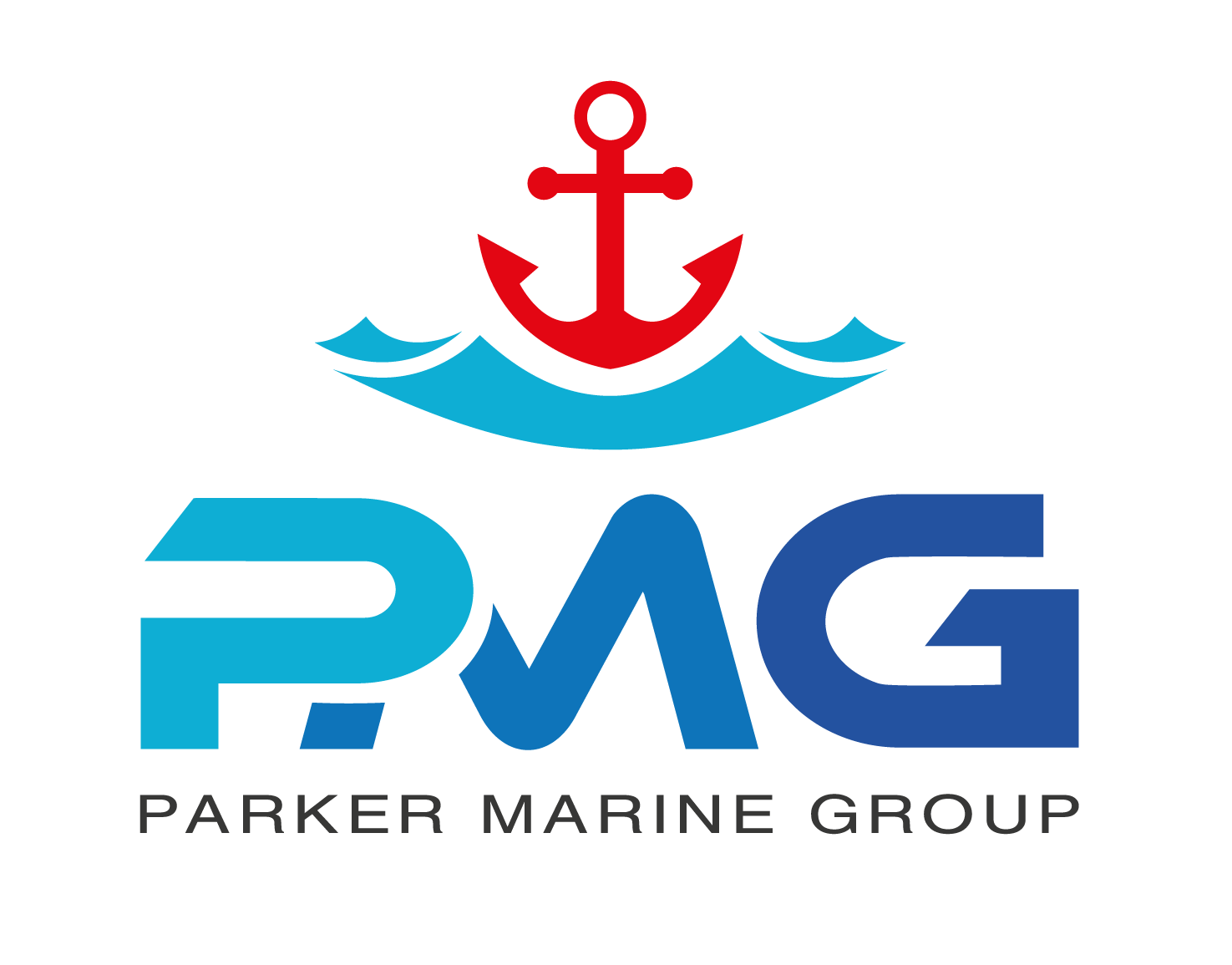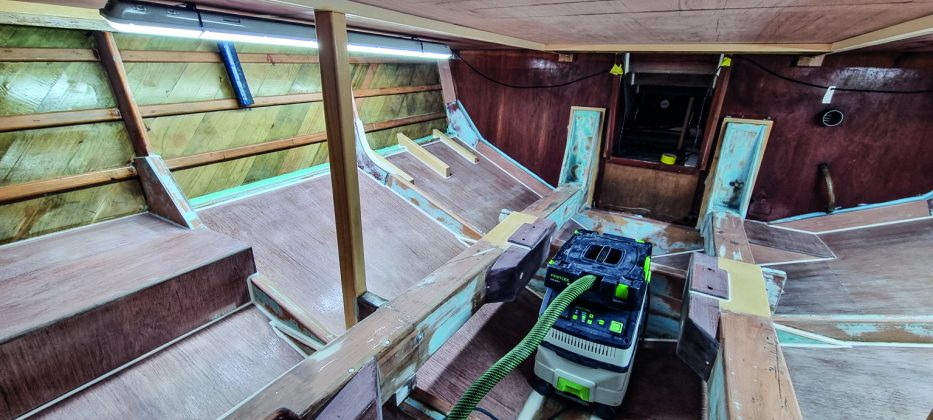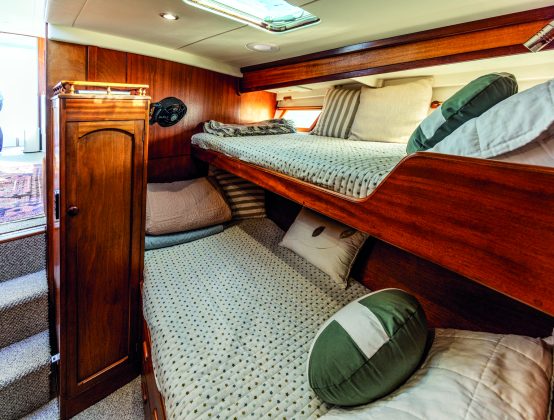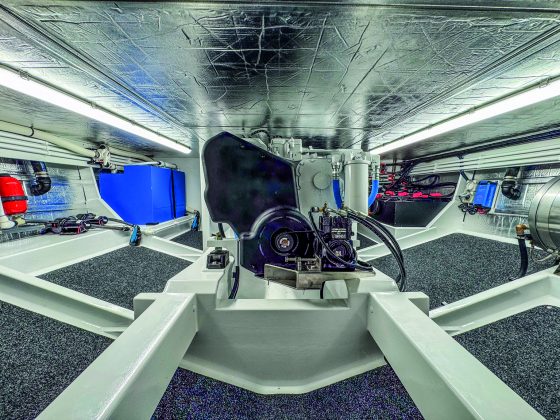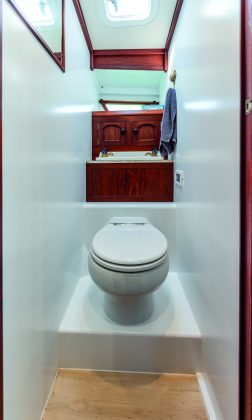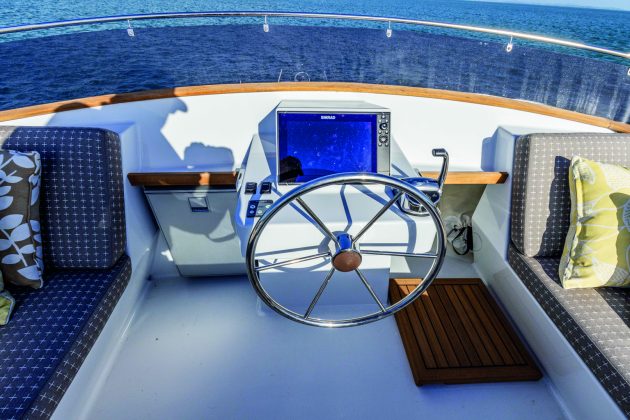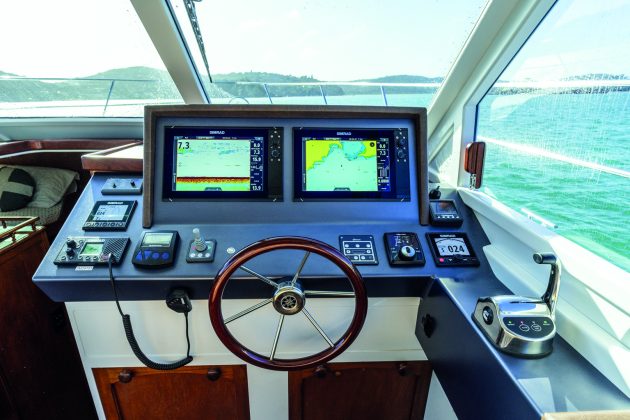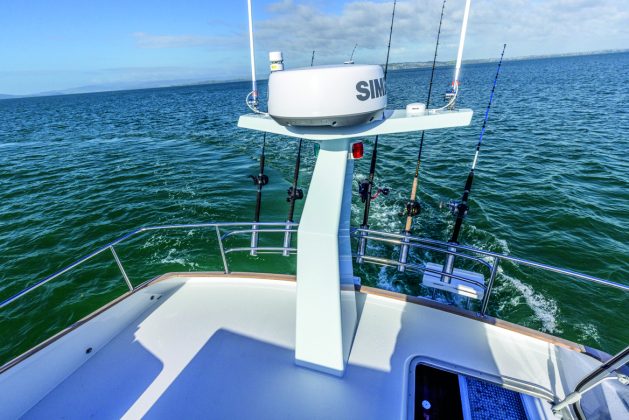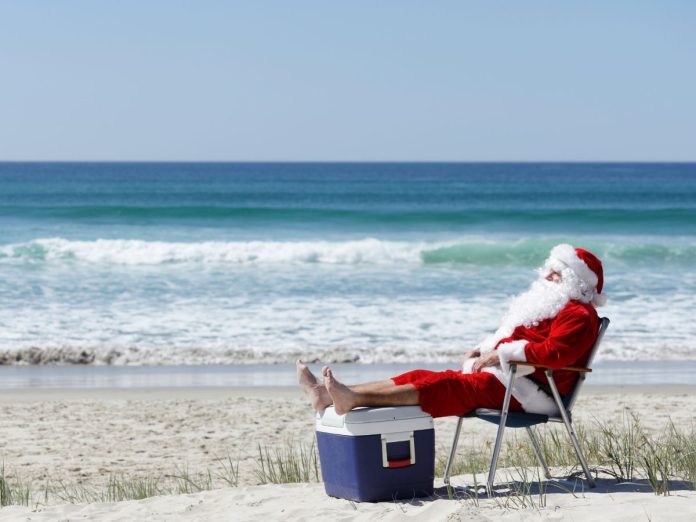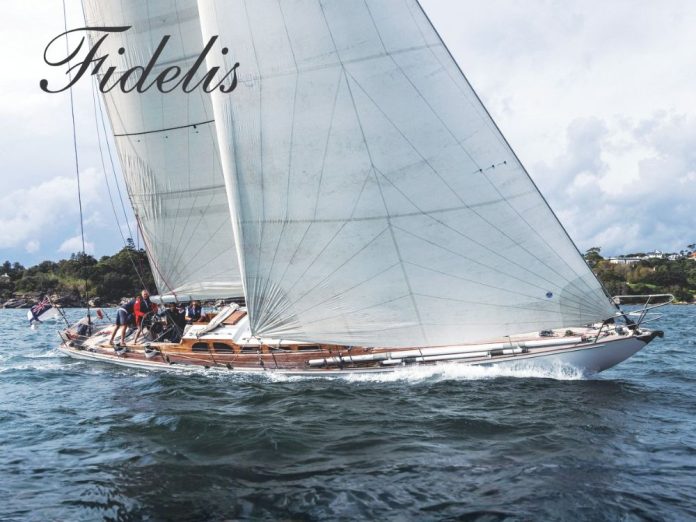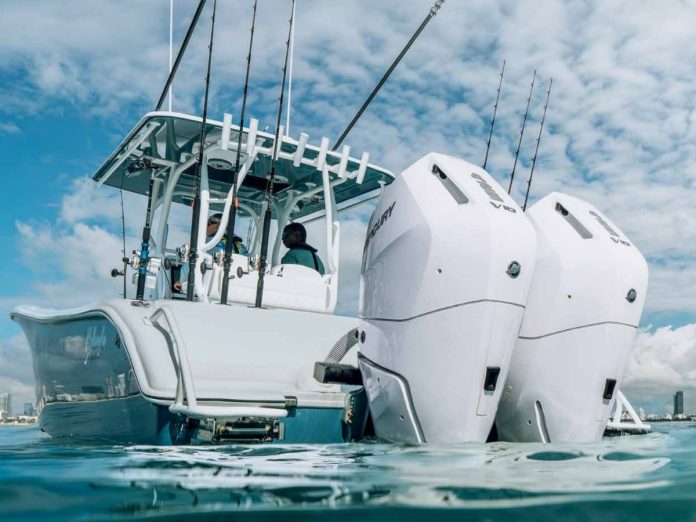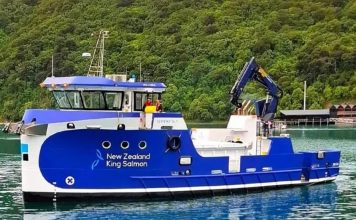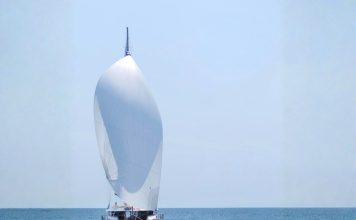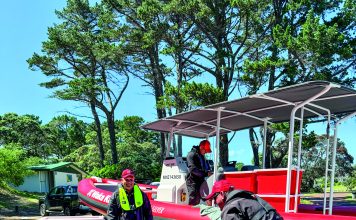Resplendent after her reincarnation by Clevedon’s Scott Lane Boatbuilders, the launch disguises her 41 years admirably. She’s shed much of the ‘80s styling and now carries cleaner, sleeker lines. While the interior layout is largely unchanged, it’s received a major facelift. All electronic and mechanical systems have been brought into the 21st century.
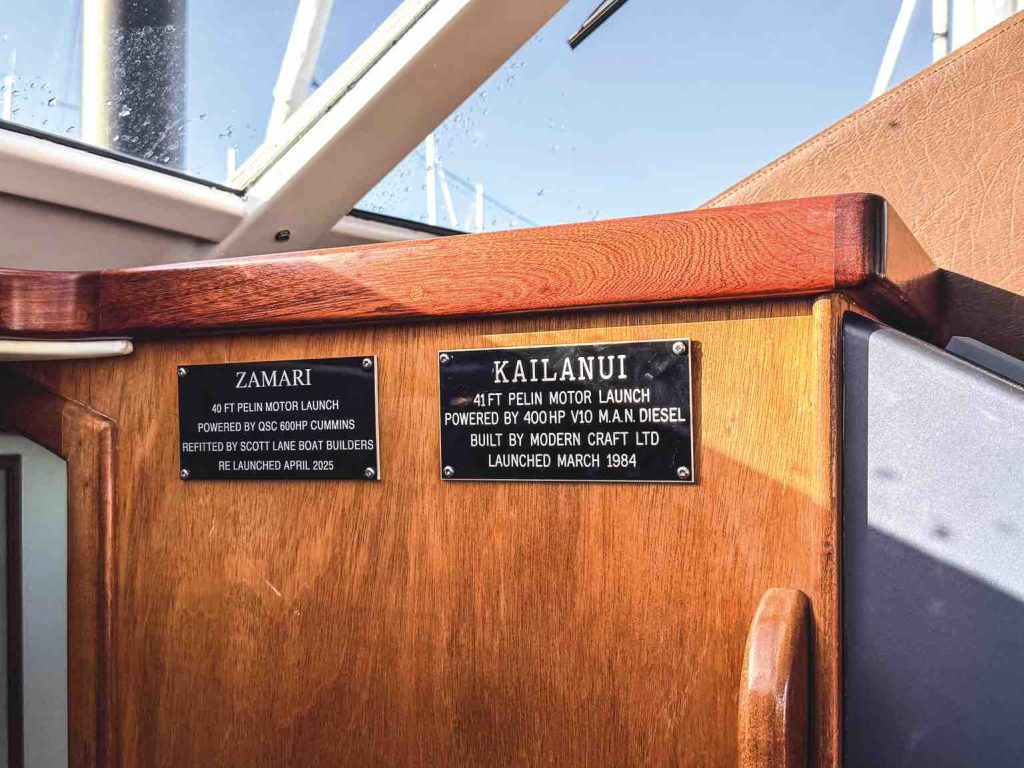
The changes extend to a new engine (smaller, lighter but with 200 more horses) – a swap that’s delivered a massive performance improvement. Pelin aficionados might recognize her as a Columbia, but for most observers – well, she looks like
a brand-new vessel.
Zamari belongs to Clevedon local Rick Anderson. He’d been looking for a refit project and stumbled across the Pelin in Whangamata (she was previously named Kailanui). He approached Scott to breathe new life into the vessel.
“Scott and I go back a long way,” says Rick. “He built my previous boat – a 43-foot Upfold Sedan called Virago. As luck would have it, there was a small gap in his schedule. Perfect for reviving the Pelin.”
Scott even helped deliver the vessel from Whangamata to Pine Harbour, where she was lifted from the water and trucked to his workshop for the four-month makeover.
A triple-skin kauri hull, Kailanui was built by Don Webb (Modern Craft Ltd). She’d survived three previous owners and was perfectly sound. The refit ‘vision,’ says Rick, was a collaborative effort. “My ideas mostly dovetailed with Scott’s pragmatism – he did persuade me to change/abandon some of the features I wanted. I respect his knowledge and experience and took his advice.”
Priority #1 was reducing LOA – the boat was a little too long for Rick’s 12m berth at Pine Harbour. Removing the bowsprit and trimming the boarding platform solved that issue. The smaller boarding platform works well with the new, redesigned transom.
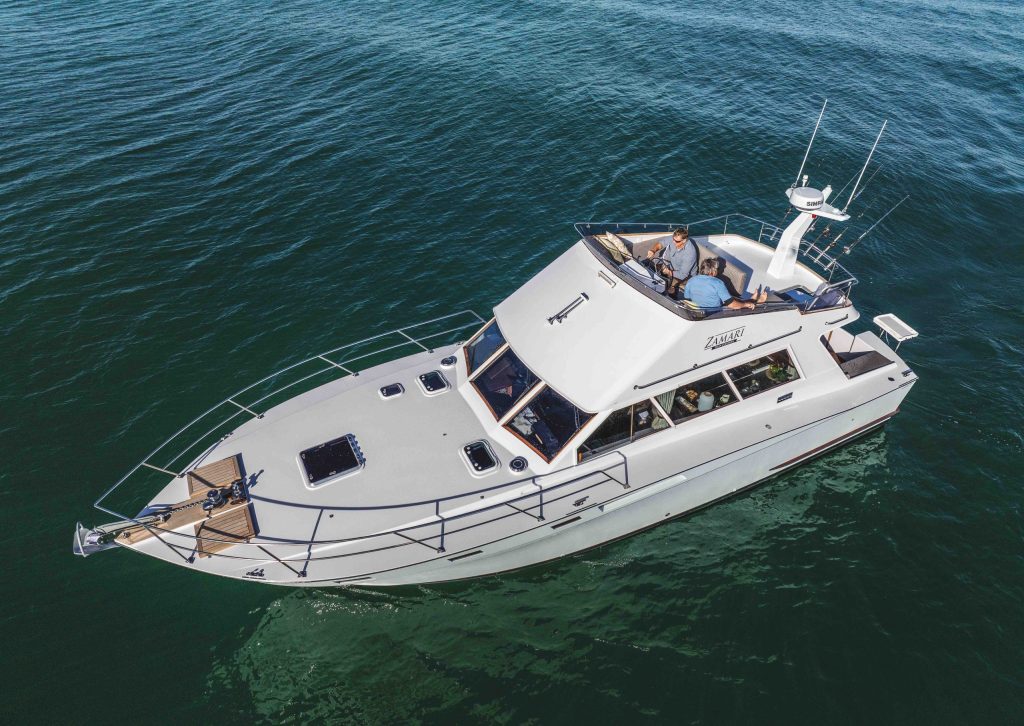
The old transom featured built-in lockers that protruded into the cockpit. Eliminating these created much more space – a change that benefits eager anglers and cockpit sun lizards in equal measure. Twin doors now slide into cavities either side of the transom – a much neater solution than the previous swing doors.
The height of the backrests behind the cockpit benches/settees has been significantly reduced – surgery that contributes to the vessel’s sleeker lines. A bigger hatch in the cockpit overhang is a much-needed enhancement for flybridge access – a lot more accommodating of generously-proportioned visitors.
A large, intrusive radar arch was removed from the flybridge and replaced with a slim, minimalist tower that carries the radar, aerials, nav lights and GPS receiver. Again, this change enhances the vessel’s more modern, streamlined appearance.
The flybridge dash was gutted and remodelled. It now features a single 12-inch Simrad MFD behind the helm – more minimalism. Recliners have been added to the settees (a touch of decadence) and under the dash is a new fridge – more decadence.
Foredeck changes include the remodelled bow (shorn of its bowsprit) with a new anchor winch and bow roller, and the removal of a large davit. Rick’s small inflatable is easily manhandled over the rail – losing the davit is an aesthetic improvement and a worthy sacrifice for the substantial space gain.
Interior
The vessel’s two-cabin accommodation is unaltered: a master suite up in the forepeak, with a double bunk cabin immediately aft, to port. She had been equipped with two heads – one with a shower/basin. This second toilet was removed, leaving a single head and a separate (and very spacious) shower cubicle. Installing a 140-litre holding tank was a first for the boat.
Most of the interior refit involved the saloon/galley. It began with gutting and rebuilding the entire starboard side, creating a new settee (which houses a pull-out double bed), a double helm seat, and a new dash to accommodate the twin 12-inch Simrad MFDs and associated controls/gauges.
These include Auto Anchor, bow thruster joystick, wipers, autopilot, Zipwake panel, Simrad VHF and the inverter control panel. Connecting everything was simplified by the installation of a brand-new wiring loom and switchboard.
The saloon’s forward port bulkhead was also replaced. It contained the VHF and SSB radios, with various cubbyholes/lockers that extended into the top bunk of the cabin on the other side. Not ideal for anyone taller than 1.2m. The new bulkhead – no radios/lockers – allows occupants a decent night’s sleep.
A domestic, full-size Fisher & Paykel fridge stands just aft of the new settee (its predecessor was half the size) – providing easy access from the port galley. A 1200-watt inverter looks after appliances like fridges and the TV – powered by a 660-amp-hour battery bank. There are plenty of 240-volt power points.
The galley configuration hasn’t changed, but there’s a new oven, benchtop and capping. A window has been installed in the aft bulkhead – better ventilation and ideal for serving refreshments to thirsty anglers. New flooring and ceiling liners have been installed throughout the vessel. The mahogany cabinetry was retained (and revarnished), with drawers receiving new veneers and soft-close fittings.
Performance
Kailanui was powered by a 400hp V10 MAN diesel weighing 1,500kg. While the engine was intrinsically sound, it was old. Keen on reliability, Rick opted to swap the MAN for a straight-six, 600hp QSC Cummins. It’s much smaller, half the weight – and the extra space makes periodic maintenance a pleasure. A wonderfully clean, crisp engine room which even boasts carpeting!
The Cummins also brought an important weight-distribution improvement. “With its old engine the boat tended to lie bow-down,” says Scott. “Because of the Cummins’ smaller footprint, we could position it further aft and rectify the imbalance.” That required shortening the prop shaft, re-machining the taper for the new coupling and swapping the original four-blade prop for a five-blade Bri-Ski.
Re-engineering the drivetrain delivered an added bonus: the strut supporting the prop shaft was 6mm out of alignment… It was easily shifted. The new system is now vibration-free and thanks to expansive insulation in the engine room, it’s also a lot sweeter on the ears.
Installing bigger engine room vents/fans expels hot air more quickly and allows the Cummins to breathe freely. Scott also changed the exhaust. “The V10 MAN had a two-into-one exhaust that exited through the transom. The single exhaust now exits underwater – again, much quieter, less smelly and there’s no unsightly residue on the transom.”
He remodelled the Pelin’s rudder: “It was a massive stainless-steel plate – way too big for a 12m launch. We trimmed its trailing and bottom edges – keeping it balanced. This not only reduces drag but also the vessel’s draft.” And with her new bow-thruster she now reverses easily into her 12m berth – and fits, but only just.
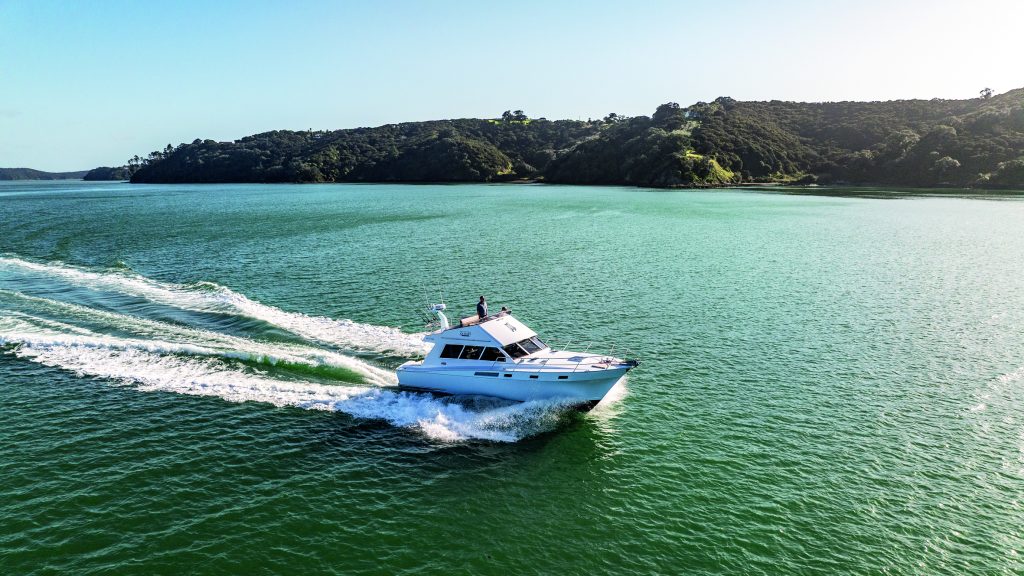
All of which has resulted in a major performance improvement. The boat previously trundled along at 10 knots – pushing it any faster quickly triggered an overheat alarm. Zamari now eases along at 16 knots with the Cummins ticking over at 2,500rpm, sipping 75 litres per hour. In benign conditions the speedo will nudge 26 knots. With 1,800 litres of fuel (in four tanks), and 900 litres of water, she’s perfect for long-range cruising.
Zamari? Rick says in the African translation the word means ‘beauty’ and ‘strength’ (appealing attributes for a boat that exudes both), but says the decision was also shaped by two horses – one owned by his grandfather and another by a friend. Both animals were/are named Zamari.
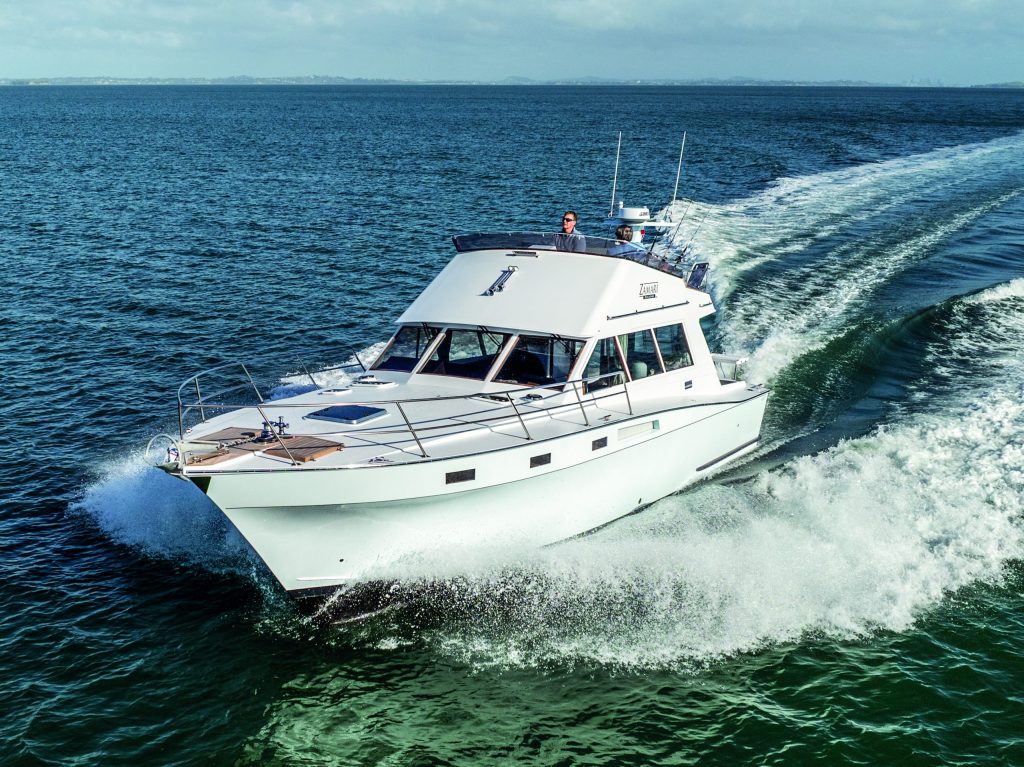
Effectively, Zamari is a brand-new boat in an old but solid shell – many seasoned boaties would be pressed to guess her true age. My guess? She’s good for another 41 years, offering reliability, comfort and great performance.
Nice work Mr Lane.












